“Where to Eat Pizza,” an Interview with Daniel Young
Note from Peter: A few months ago I got to be a judge at the Caputo Cup Pizza Championship in NYC (we’ve already posted a few pieces on this event), where I met fellow judge and noted journalist Daniel Young. What I didn’t know until we met was that he was about to release a major book, Where to Eat Pizza, featuring about 1,700 of the best pizzerias in the world. This is big news for pizza freaks like us, obviously, so I asked Daniel if he’d let me interview him here for our followers and he graciously agreed. You’ll find links to the book and to Daniel’s website, Young and Foodish (great title, don’t you think?), at the end. This is one of those books that I’m sure most of you will want to own so, without further ado, here’s our conversation:
–Peter: Daniel, congratulations on this enormous achievement! Have you recovered yet from all the tasting you must have done, and can you tell our viewers a little about yourself and your love affair with pizza?
Daniel: I live in London but I was born and raised in New York. Pizza was my first solid food. I have zero recollection of any time in my life when I was not loving pizza, when I was not yearning for it. Even when I was a food critic and then restaurant critic of the New York Daily News, pizza remained an obsession. I believe I was the first newspaper critic to write about such classic New York pizza spots as Rizzo’s, Sam’s, Deninos, Nunzio’s, L&B Spumoni Gardens and Delmar. From the age of 7 my father would take us to Luigino’s Pizzeria alla Napoletana, a popular celebrity haunt on the block of 48th Street with all the musical instrument shops. Every inch of wall space was covered with signed photos of Broadway, Tin Pan Alley stars and Italian singers, from Caruso to Sinatra. What I remember most are the big black bubbles in the crust and the drippy, molten mozzarella that would burn the roof of my mouth. I’ve never eaten a better pizza. Of course my late father being at the table has lots to do with that. I loved loving pizza with him.
–Peter: So, really, how many pizzerias were checked out in order to arrive at the 1,705 that made the cut and how many contributors and reviewers did you need to cover this much ground?
Daniel: Most nominations were based on pre-existing knowledge about the local or regional pizza scene. But when I or another regional expert heard about a promising opening or discovery we made sure it was checked out. When Standard opened in Berlin, not a great pizza city, I was alerted to it by Torsten Goffen, the regional expert for Cologne. I, in turn, notified Luisa Weiss, the regional expert for Berlin. And then Malin Elmlid, one of her valued contributors, tried Standard and praised its simplicity, high-quality ingredients, so it made the cut.
For the guide I personally recruited 121 regional experts, a task which itself nearly killed me. Less then 10 of them were pre-existing friends or acquaintances. I was seeking not just knowledgeable critics with a special appreciation and passion for pizza but also great food people with a trusted network of key contacts. These regional experts tracked down 956 pizza informants in 48 countries. Together we nominated the 1,705 pizza places in the guide.
Yet, even with those impressive numbers we admittedly missed more than a few world-class pizzerias. I hope readers will forgive us, will forgive me. I did my best. I am very proud of what we’ve accomplished.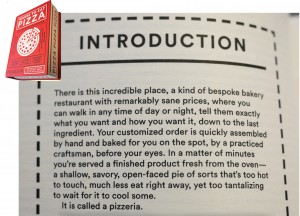
–P: Can you give us a quick demographic breakdown of the countries represented in the book and where you found the highest concentration of great pizzerias?
D: We covered nearly every place you can think of – Russia, Slovenia, Kuwait, Panama, Mexico, Vietnam.
I wouldn’t say there is great pizza everywhere, but there can be great pizza anywhere. It only takes one geek determined to learn from the best, lock up in a basement kitchen for months and not see the light of day until he or she has perfected his/her dough. Within this trend comes the spirit of one-upmanship. Just when you thought someone has done the best pizza ever another geek does it better.
In London the highest form of praise for a chef, baker or food professional is “end of” – end of story, you can’t do better, this is the best, there’s no use trying. End of. Sorry, but there is no longer any such thing as “end of”. We live in the age of “beginning of” – nothing is perfect, nothing is ideal, everything can be improved upon. There are kids who think they can do better, who know they can do better. And a few of them will succeed. That’s what’s so great about the millenials. Many of us ridicule overused buzzwords like “artisanal” or “craft.” But if these terms reflect this determination to devote oneself to one thing and do it better than anyone I applaud them. I heart artisanal.
In “Small-Batch Pizza in Small Town USA”, one the 13 essays I wrote for Where To Eat Pizza, I featured two such determined pizza geeks, Caleb Schiff of Pizzicletta in Falstaff Arizona, and David Bauer of All Souls Pizza in Asheville, North Carolina. Both are passionate about their craft but don’t always follow the rule book, at least not the Neapolitan rule book:
“I really hate VPN shit,” says Schiff, regarding the strict guidelines dictated by the Vera Pizza Napoletana association. “When I say I want our pizza to be distinctive I am saying that if you saw a picture of our pizzas you’d know it was Pizzacletta. The pizza we are making is entirely our own.”
“If there was a founder of Neapolitan pizza, a Jesus figure,” says Bauer, a champion of local wheat, meats and produce, “he would probably just work with whatever was around him.”
The highest concentration of “great” pizzerias is in the USA, Japan, Brazil, Argentina and of course Italy. In most areas of Italy, however, it’s easier to find a mediocre pizza than a really good one. If you’re traveling in Italy you cannot trust your pizzadar (pizza radar). You really need Where To Eat Pizza.
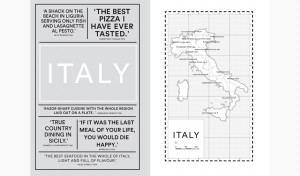 Here, Peter, I need to address the meaning of “great”:
Here, Peter, I need to address the meaning of “great”:
First, there is the question of authenticity. I identify and respect three notions of authenticity in pizza:
1) Pizza that’s true to its origins, namely Naples.
2) Pizza that’s true to what you grew up with, what you ate with your mom and dad, that evokes great memories. This could be in New York, Rome, Buenos Aires, Sao Paolo, Detroit – all areas of the world with a distinct regional pizza culture.
3) Pizza that’s true to the vision of the pizza maker.
Naples is not the best because soft-crust is better than crispy, or uncooked passata is better than a pre-made pizza sauce. Naples is the pizza capital of the world – and in Where To Eat Pizza – it’s the only place where all three notions of authenticity are represented.
Be that as it may, a third-generation neighborhood pizzeria in Naples is not automatically superior, more important, or somehow more valid than a fashionable pizza place in West Hollywood. This is sentimental sauce: The Italian food blog/online magazine dissapore.com trashed the book and, more specifically, me, for singling out Pizzeria Mozza as one of the best pizza places in the world. But as our great friend John Arena says, “Many places are important for things other than what is coming out of the oven. The history, impact, even how a pizzeria represents and reflects the unique culture.” By these measures Pizzeria Mozza is a groundbreaking pizza place. Nancy Silverton was layering burrata over a sourdough base a decade before most of the food world knew what either was.
In the pre-Mozza age pizza was revered in most of the world as a trashy fast-food delivered by multinational chains or greasy neighborhood joints. Now it’s a culinary and, yes, trendy craft embraced by serious bakers, you first and foremost among them, and now Michelin-starred chefs.
The best pizza makers can make a Margherita with their eyes closed. But many don’t know how to think and create like a chef. As a result their innovative combination pizzas may look sexy on Instagram but the compositions don’t always make sense. The toppings don’t work together. Or there are just too many of them. A wonderful worldwide trend consists of pizzaioli who think like chefs – smart chefs who understand that less is more. They may introduce kimchee, barbecued brisket, sauerkraut or sashimi on a pizza but it won’t all be on the same pizza, thank Heavens.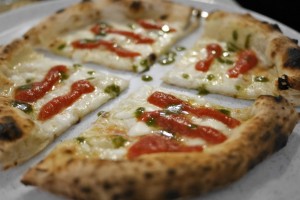
–P. Do you foresee that any of these results may help settle arguments about which really are the best pizza cities or regions?
D. This book is supposed to be “the last word on the slice.” But me, when it comes to pizza, I like to start arguments, not settle them. Remember, Peter, my mantra is “beginning of” and not “end of.”
–-P. I know you have to be somewhat diplomatic about your own preferences, but did the results either confirm or challenge your own preconceptions about pizza and its various styles?
D: I believe in pizza bubbles, as never before. As in music they are the silent spaces that make the notes stand out. No matter the style of pizza there must be some development of the hole structure, there must be compression to the chew for full enjoyment. Everyone talks about pleasantly chewy pizza by I’m not always sure what they mean. Also, why is chewy pizza dough good but chewy meat is bad?
So I’ve thought a lot about chewiness and elasticity, from the eating point of view, not the baking point of view. And if a pizza is delightfully chewy that means the eater has two alternatives when biting off a piece:
- Bite into the pizza and pull the slice away from your head to brake off a mouthful.
- Bite into the pizza and pull your head away from the slice to break off a bite-ful.
That elasticity contributes to the appreciation of the pizza and how its components work in harmony. This is the thing about true Neapolitan: It might be soft, or un-crisp, but the elasticity and chewiness make you break it down in your mouth. You must work it around. It’s a very physical food, even if it’s not crisp or crunchy.
–P: As someone who continues chronicling pizza through various competitions around the world, what are some of your insights about the future of pizza? Do you think there is anything new, some possibility that has not yet been revealed, that will surprise us, or do you believe that the old masters still have not been surpassed? I guess I’m also wondering how you feel about traditional, Italian style pizza as opposed to global-styles that veer from the Mediterranean, Italian influence and flavor profile? How far can we push the envelope? Along this line, who are your three or four personal pizza heroes?
D: Pizza makers will spend decades trying to improve upon the Margherita and, you know what? They will never succeed. But that shouldn’t stop that from trying to find alternative roads to pizza paradise. I think we have entered the post-Neapolitan era. People all over the world have embraced Neapolitan pizza. The Japanese pizzaioli are so loyal to their Neapolitan masters they even follow them into the men’s room, so eager are they to observe and copy their every move.
But soon even they will experiment and innovate. And they will surpass their masters. It’s like painting and music. You must learn to draw and play scales first. You should develop an appreciation of the classics. Then you do your own thing. Strict guidelines are great for learning and developing your craft but they limit creativity.
Bringing the regional pizzas from their hometowns – Naples, Detroit, New Haven, Rome, Buenos Aires – to new places is very big right now. That development will continue. I’m waiting for Argentine pizza to come to New York and London. Even so, I foresee the era of very personal pizza defined not by place but by pizzaiolo. In London everyone tweets or blogs about the best pizzerias yet pretty much ignores the pizzaioli. It’s weird. Even in restaurant criticism there is the habit of praising the chef and making him or her a star while ignoring the pastry chef. But social media is transforming anonymous pizzaioli into rock stars. I revere Franco Pepe, and Enzo Coccia, two pizzaioli from baking families who respect the past but aren’t lost in it. They know their pizza is better than their fathers’ pizzas, even if they don’t like saying it. They also know the pizza they make in five years will be superior to the pizza they bake now.
One of my pizza heroes is not even a pizza maker. Not technically. It’s Christian Puglisi, the Michelin-starred chef behind Bæst in Copenhagen. “Some say pizza should be crispy,” Puglisi told me. “Some say pizza should be soft. No, pizza should be how you want it to be.” Amen.
–P: What’s next for you? Are there any other foods that you’d like to track down and catalog?
D: Are you kidding? There is no next after pizza. I am pursuing more pizza projects. This book answered the question “Where to Eat Pizza?” Other books have taught us “How to Make Pizza?”. I’m collaborating with the great Enzo Coccia on a special pizza appreciation course/tasting/tour in Naples that will address the question: “How to EAT Pizza?” We all know how to eat pizza, sure, but we can all do it better.
P: Thanks so much, Daniel, for all your hard work on this project and for your pizza passion. It’s very inspiring, especially for those who share your quest, like the folks who are reading this now.
Final Note from Peter: See below for links to Daniel and his blog and website:
|
|
|
About the book and to purchase book: http://www.phaidon.com/store/food-cook/where-to-eat-pizza-9780714871165/ link to Daniel: http://www.youngandfoodish.com/where-to-eat-pizza/
link to his bio: http://www.youngandfoodish.com/about/
link to Where To Eat Pizza Facebook page: https://www.facebook.com/wheretoeatpizza/
|
—
Recent Articles by Peter Reinhart
- “Tommy & Atticus” in Redondo Beach, CA. A Sourdough Success Story
- Howard Brownstein on Turnaround and Crisis Management
- Randy Clemens and Forest Farming in Uruguay — The Back to The Earth Movement is Back!
- It’s not too late to chase your dreams: “Pizza From the Heart” A New Book by Paulie and Mary Ann Gee
- Kyle Ahlgren on the Artisan Baking Center Online Classes (and a special offer)
- Multi-James Beard Nominee Cathy Whims of Portland’s Nostrana and her Brand New Book
Comments
Add Comment
You must be logged in to post a comment.



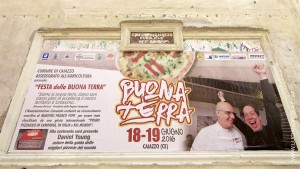


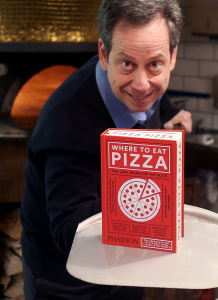







I love this interview! It makes me want to start writing about pizza again!
I hope you do, Cary. Let me know so that we can spread the word.
Great interview, I agree with Daniel, it’s hard to find great pizza everywhere, thanks Peter and Daniel, good luck with the new book “Where to Eat Pizza”.